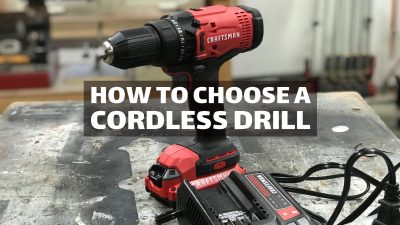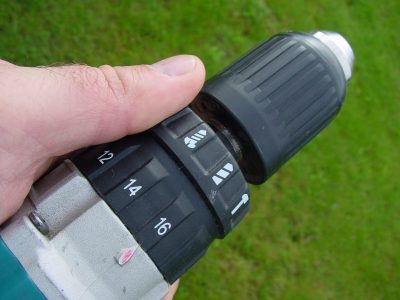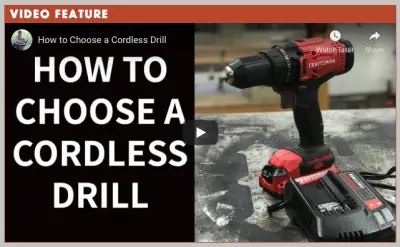 UPDATED 22Feb2020 + video below: Interested in taking care of your own home as much as possible? A cordless drill can help more than any other single power tool. Installing shelves, assembling furniture, boring holes in wood for simple projects – a drill is essential for all these tasks. If you feel inadequate walking down the power tool store aisle looking to select a drill, remember the three main points I’ll share in this article and you’ll be fine. Drill quality is great these days, and drill prices are lower than ever.
UPDATED 22Feb2020 + video below: Interested in taking care of your own home as much as possible? A cordless drill can help more than any other single power tool. Installing shelves, assembling furniture, boring holes in wood for simple projects – a drill is essential for all these tasks. If you feel inadequate walking down the power tool store aisle looking to select a drill, remember the three main points I’ll share in this article and you’ll be fine. Drill quality is great these days, and drill prices are lower than ever.
Cordless Drill Issue#1: Choose the Right Voltage
All cordless power tools use rechargeable batteries as an energy source instead of plugging a cord into the wall, and these batteries and tools have certain voltage ratings stamped on them. For general use around the house, aim for a mid-voltage drill with either an 18 or 20 volt rating. Drills like this are light enough to be easy to use, yet strong enough that they can handle serious work when it comes up. Most power tool companies in the world market 18 volt tools, but DEWALT’s current version is 20 volts. Sounds significant, but it’s not. 20 volts is what all brands of batteries in this class put out at rest when fully charged. This is even true with batteries labelled 18 volts, and both 18-volt and 20-volt batteries put out about 18 volts when fully charged during use.
You’ll also find that 12 volts is another popular cordless drill voltage and there are some small but effective drills in this category. If you value a particularly small and light drill, and you don’t expect to use your drill for anything more than boring holes in wood or drywall up to 7mm or 8mm in diameter, then a 12 volt drill will probably serve you well.
Cordless Drill Issue#2: Choose the Right Features
Most people know that a drill spins some kind of bit to bore holes in wood and plastic. What you might now know is that there are two other modes that cordless drills can sometimes have: “drill driver” (for driving screws) and “hammer drill” (for efficiently boring holes in masonry).

When a drill is marketed as a “drill driver”, that means something. It means there’s some way of limiting the amount of twisting force that the tool can deliver before controlled internal slipping kicks in. This makes it easier to drive screws to a consistent depth.
Some cordless drills are also advertised as “hammer” drills and this means something specific and useful for drilling in brick, block and concrete. Instead of just spinning a masonry drill bit, a hammer drill also introduces a high frequency back-and-forth pounding action. Think of it like a miniature jack hammer, pounding away while the bit spins. The bottom line is vastly faster drilling progress through any kind of masonry – 3x to 5x faster, in fact. Hammer drills cost more, but they’re the only practical option for boring holes in masonry.
Point#3: Choose the Right Brand
An important thing to understand about power tools these days is that some of them are way too cheap. Even an extremely cheap tool is no bargain at all if it stops you from working efficiently or it breaks in short order. On the other hand, you probably don’t need a $300 cordless drill if you’re not a professional tradesperson. So what should a homeowner aim for?

My rule of thumb is to go with a name brand model in the $100 to $150 range. Pay attention to the number of batteries that come with the different kits and their size, too. Two batteries are always better than one. Things start to get dicey below $100, and any cordless drill under $50 is not worth buying at all.
Click here for a video lesson on choosing and using a cordless drill.